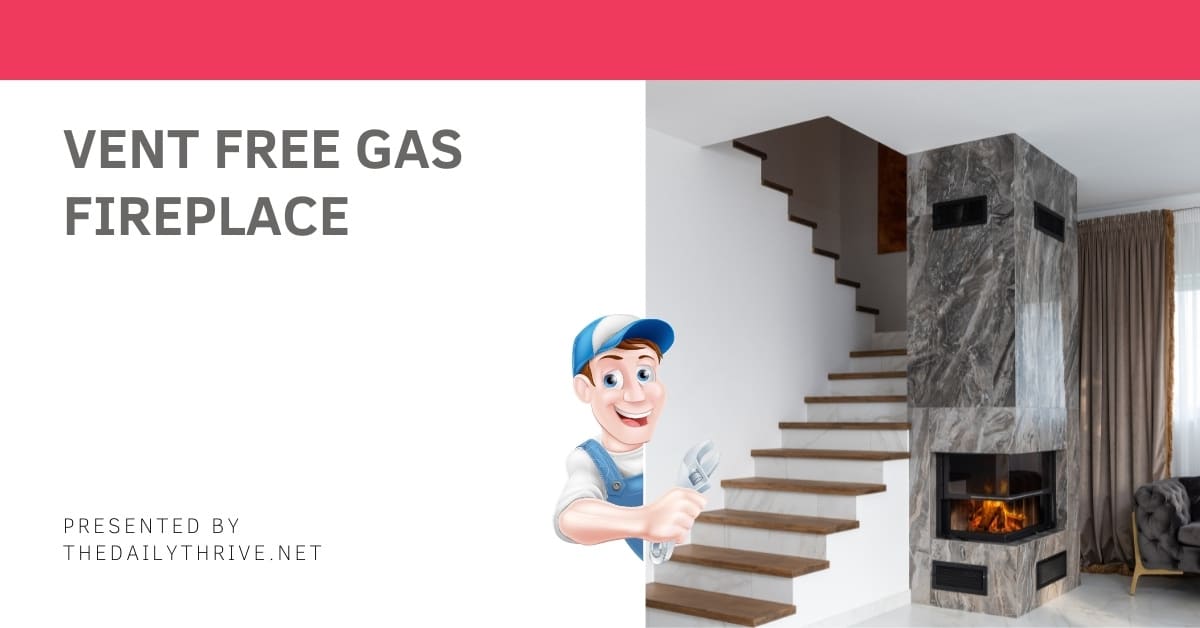A vent free gas fireplace can be just the solution to add the warmth and comfort of a fireplace without the expense and trouble of venting! A ventless fireplace can be a versatile and less expensive alternative to add to any room in your house.
The clean and blue flame produced by a vent-free gas fireplace enables almost complete fuel combustion. This means that a ventless fireplace produces far less soot and particulate matter, not to mention carbon monoxide, than vented fireplaces.
These ventless units are easy to install either in an existing masonry firebox or a specially designed firebox designed to work with the vent free fireplace. Many builders offer vent free fireplaces as an option.
Our house has a wood-burning fireplace in the great room living space, which is a main focal point. However, in the smaller living room and our master bedroom, we had our builder install gas-burning units that vent directly outdoors. This unit is a very efficient home heating source!
When planning a home, choose locations to install additional fireplaces where outside ventilation will easily accommodate the exhaust vent.
Vent Free Gas Fireplace Benefits
- No chimney, flue, or fireplace venting required; easy to install, simple direct outside exhaust vents.
- Ventless fireplaces usually vent the exhaust out the back or top of the unit, in which case they either vent exhaust up through the roof or, more commonly, use an elbow to exhaust out the back of the wall a few feet above the unit.
- Pipes inside the unit vent the exhaust out the top or back for more versatility in terms of installation options.
- Efficiently heat a room; many vent free fireplaces are certified as gas wall furnaces!
- Do not require as much space as traditional fireplaces since a “true” firebox is not required. The design is typically quite narrow in-depth and is “zero-clearance,” giving them a huge advantage over traditional fireplaces and chimneys!
- Some units can be purchased, including the surround and mantle. A hearth may not be required depending on the type of unit and height at which it is mounted on the wall; these units must be completely free of any combustible materials.
- Ventless fireplace units have an enclosed opening on the front.
- A vent free fireplace is eco-friendly, emitting almost no particulate matter into the environment and heating your home far more efficiently than a traditional wood-burning fireplace.
- No hassle; you won’t have to worry about chopping and splitting wood, hauling it in the house to make a fire, and you’ll never have to clean cinder and ash from the firebox!
Ventless Gas Fireplaces and Humidity Levels
A drawback of this approach is that, since the byproducts of combustion from a vent free fireplace enter your living space, they also increase humidity since another byproduct of combustion will, of course, be carbon dioxide.
In a dry, cold winter climate, the moisture from a vent free fireplace may be a plus, helping to moisturize the living space. But in a cold, wet climate, an airtight, well-insulated home may be subject to unwanted moisture, condensation on windows, etc.
Since a vent free fireplace produces intense heat, keep any combustibles away and leave the doors to your fireplace open when it’s in use. Many of the gas-burning vented and ventless units have fans; the units in our home use fans to cool the fireplace and surround and improve their heating efficiency.
Before selecting a ventless or direct vent fireplace unit, be sure you understand the specifications for venting, installing any outside venting, and other details!
Most manufacturers recommend NOT letting your vent free fireplace burn for long periods; you wouldn’t want to turn it on and leave the house or go to sleep. Newer models have a built in carbon monovide detector, and can automatically shut off when the danger lever is reach.
Install carbon monoxide sensors in your home to ensure levels inside the living space are below any level that might be harmful. These are a good idea regardless of what type or whether you have a fireplace(s) in your home.
Another drawback is the question of how realistic a vent free fireplace looks; does it really feel like a natural fire?
Well, the answer is no, not completely. But how realistic the flames look depends on the quality and type of artificial logs your unit uses and how much engineering has gone into the burners to simulate the look of a real wood fire!
Vent Free Gas Fireplace Cost
Check to be sure the unit(s) you buy are lab-certified and meet your local building codes; regulations may also specify where and what type of unit meets the code.
The price of ventless fireplaces varies greatly, dependent on the size, style, materials and finishes, quality of the burners and artificial logs, and available options such as surrounds, hearths, and mantels.
You can find some vent free fireplace models as low as several hundred dollars, while others can run to several thousand, including installation and custom surround, hearth, and mantelpiece.
Regardless of what interior design style you have, you can select a ventless fireplace to match. Ventless fireplaces can be contemporary, country, traditional, and even modern in style. If you don’t have access to a gas line to run a ventless gas fireplace, don’t worry; you can get a ventless fireplace that’s also flameless.
Electric Fireplace Options
There are also electric fireplaces that simulate real flames using a light optical illusion. Some of these units also have an electric heating element to give the warm feeling of a true fireplace.
These units are very easy to install (availability of electricity is the only real challenge), inexpensive, require no maintenance, and emit no particulates or carbon monoxide fumes since no combustion occurs.
We hope you feel more confident in choosing the best vent free gas fireplace for your home after reading our guide. If you have any questions related to the home heating system, feel free to comment below.

